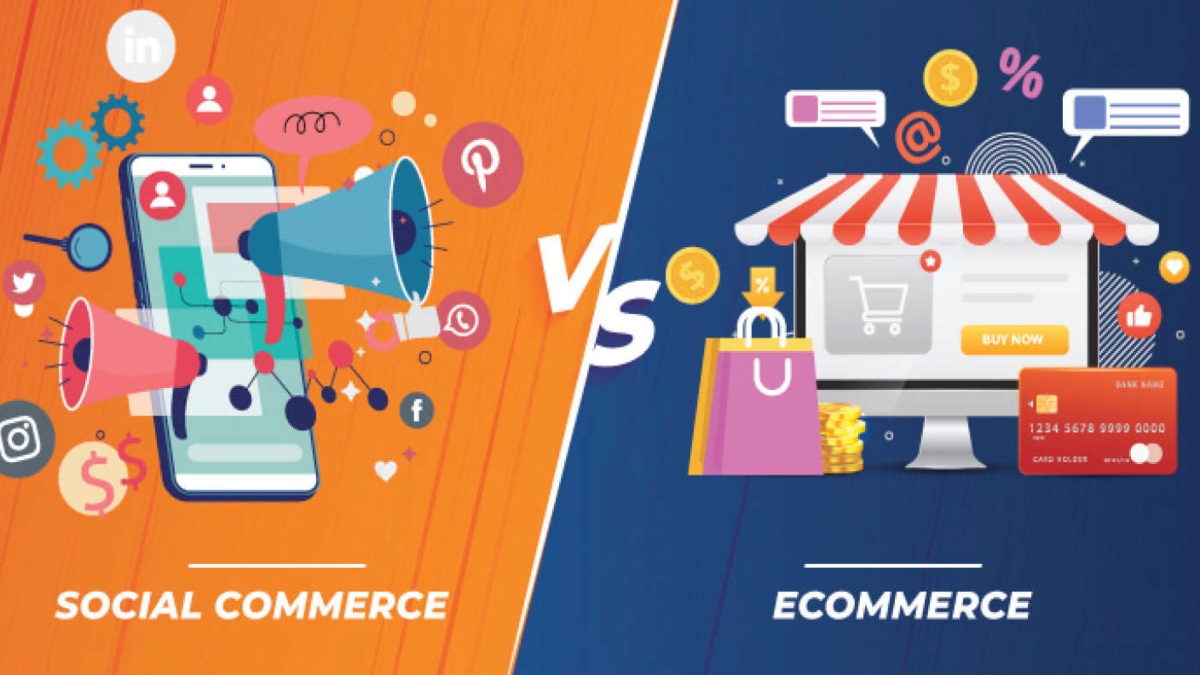At first thought, you might question if there is much difference between the two. After all, both e-commerce and social commerce involve buying and selling through an online platform. But in reality, social commerce offers some key differences and benefits when compared with traditional online stores.
In general, social commerce refers to the act of selling goods directly via social media sites like Facebook, WhatsApp, Twitter, and Instagram. Social media advertising campaigns can focus on obtaining impressions, clicks, engagement, increased reach (for branding efforts), or conversions in the form of leads or sales and more, where users are redirected to an online website store. India’s social commerce market will grow the fastest over this period, an Accenture Consulting Report on the Social Commerce Market stated. The trend is being driven primarily by Gen Z and Millennial consumers, who are expected to account for 62% of the spending.
Accenture’s report said that though China would remain the most advanced market both in size and maturity, the highest growth would be seen in developing markets such as India and Brazil. “In these markets, social commerce has the potential to leapfrog e-commerce as new business models allow for greater participation in digital commerce across all spectrums of society. India’s social commerce market is expected to grow at a 59% compound annual growth rate to $17 billion in gross merchandise value by 2025. Brazil’s market will grow at a 30% CAGR to $5 billion over the same period. China’s social commerce market will grow at 26% to more than $1 trillion, while the US market will grow at 25% to just under $100 billion, less than a 10th of China’s.
Globally the social commerce market will grow to almost two-and-a-half times from $492 billion in 2021 to $1.2 trillion by 2025, with the Indian market growing at a much faster rate than others within this period, as per a report by Accenture. This is three times faster than the traditional e-commerce is expected to grow over this period. By 2025, social commerce is expected to account for 17% of all e-commerce spending, up to 10% currently.
The global e-commerce market is expected to total $5.55 trillion in 2022. That figure is estimated to grow over the next few years, showing that borderless e-commerce is becoming a profitable option for online retailers.
Only 17.8% of sales were made from online purchases two years ago. That number is expected to reach 21% in 2022, a 17.9% increase in e-commerce market share over two years. Growth is expected to continue, reaching 24.5% by 2025, which translates to a 6.7 percentage point increase in just five years.
E-commerce in India is predicted to grow at a 27% compound annual growth rate over 2019-24 and reach up to $111.4 billion by 2025, up from $46.2 billion in 2020.
The report said that by 2025, the highest number of social commerce purchases globally is expected in clothing (18% of all social commerce by 2025), consumer electronics (13%), and home décor (7%). Although nearly entirely limited to China, fresh food and snacks are also a large product category (13%). Accenture also mentioned that beauty and personal care, although a small portion of the social commerce market, beauty, and personal care are expected to quickly gain ground in e-commerce.
Ecommerce is a process by which businesses and consumers sell and buy goods and services through an electronic medium. Everyone has its own set of advantages and disadvantages, and many businesses run in several categories at the same time. The 4 types of E-Commerce are:
1) Business-to-business (B2B)
2) Customer-to-business (C2B)
3) Customer-to-customer (C2C)
4) Direct-to-customer (D2C)
China continues to lead the global e-commerce market, accounting for 52.1% of all retail e-commerce sales worldwide, with total online sales just over the $2 trillion mark in 2021. It also has the world’s most digital buyers, 824.5 million, representing 38.5% of the global total.
The US e-commerce market is forecasted to reach over $875 billion in 2022, a little over a third of China’s. After China and the US, the third-largest e-commerce market in the United Kingdom, taking up 4.8% of the retail e-commerce sales share. The UK is followed by Japan (3%) and South Korea (2.5%).
The top five e-commerce markets haven’t changed since 2018. Trends from eMarketer suggest that these markets will stay in the top five until 2025.
The overwhelming amount of Facebook buy and sell communities makes it evident that online social interaction and online shopping is a perfect match. The customer experience is made easier by social media shops, which eliminates complexity from the process of purchase. It allows you to quickly pick products and complete the checkout process in just a few taps, without having to think up and enter accurate search queries to explain your needs. Social commerce allows customers to engage, explore and buy products on social media, without ever having to leave the platform. It’s simple, convenient, and, crucially, immediate. In short, social commerce is everything that modern consumers crave.
The rise of social commerce is also due to the growing use and popularity of chatbots. Chatbots allow companies to engage meaningfully with customers and offer affordable, round-the-clock customer support. These technologies, together with a solid strategy for conversational marketing, are changing the way brands utilize e-commerce and opening up new possibilities for retailers.
Both e-commerce and social commerce are powerful sales weapons and can be combined or used as a standalone portal. But remember, in today’s evolving commerce world, establishing a purpose-led, long-term marketing strategy is the secret to success.
Whether you choose to sell on social networks or traditional online stores, building a solid conversational marketing strategy is essential to put your brand firmly on the digital map.
Forbes suggests that young people shape consumer markets, determining what is trending and therefore what drives demand in consumer markets. The vast amount of time Generation Z and millennials spend on social media has led social commerce to become such a key driving force in online commerce, with Gen Z spending two to three times more shopping on social channels than the average consumer. Short-form video content is beginning to dominate, with younger generations favoring platforms such as TikTok, Instagram, and YouTube. However, platforms such as Facebook remain a strong force in the world of social commerce for your business






















